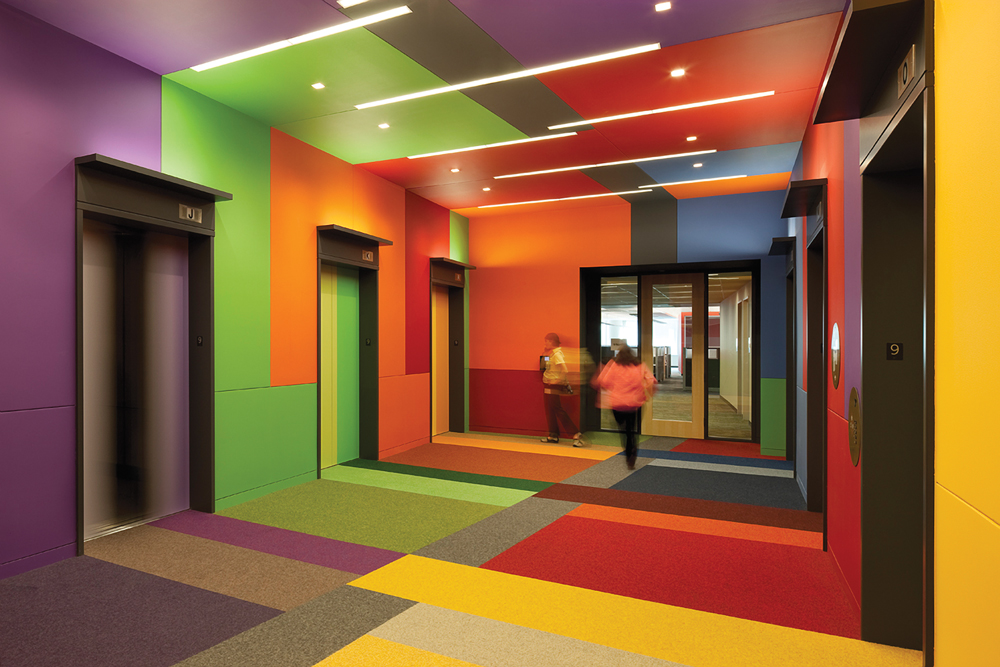When it comes to durability, a 50-year building design ideally should include 50-year coatings. Many building products consume substantial amounts of energy, water, and petrochemicals during manufacture, but they can make up for it in the operations phase. The same should be expected from architectural coatings.
This course provides useful advice to design and construction professionals on how the best paints and coatings protect building components long enough to produce a net-positive savings. In addition, buildings should have a beneficial effect on human health, so if coatings release harmful chemicals those exposures should be minimal as compared to the salutary effects on occupants and neighbors over years of facility use.
This course will discuss how to assess the sustainability value of architectural coatings relative to their performance value to end-users.
After reading this article, you should be able to:
- List the sustainability and performance benefits of architectural coatings in general and for specific types of coating products.
- Discuss green standards, labeling programs, and statutory VOC requirements for coatings used in the United States.
- Describe the variables of paint and coating selection that impact sustainability and occupant health, safety, and welfare, including productivity and psychological benefits.
- Explain the impact of sustainability improvements on paint and coating selection.
Take this BD+C University course
Related Stories
Architects | Mar 31, 2016
Auto-shading windows and point-of-decision design are among the research projects to receive AIA funding grants
Firms represented by the projects and initiatives receiving grants include HKS, DO|SU Studio Architecture, and McClain + Yu Architecture and Design.
Hotel Facilities | Mar 30, 2016
The Usonian Inn, a Frank Lloyd Wright-inspired motor lodge, is on the market for $665,000
The Usonian Inn proudly displays many Wright-inspired characteristics, the most prominent of which is the use of cantilevered overhangs.
Designers | Mar 30, 2016
A technical pen for the modern age
Morpholio’s new ScalePen feature dynamically sets line weight depending on the scale or zoom level of the drawing.
Architects | Mar 29, 2016
Why drawing remains relevant in the design process
Hand-drawn concepts allow ideas to emerge and build stronger connections between the design and the audience, as Gensler Principal and Design Director Alex Fernández writes.
Education Facilities | Mar 28, 2016
Steven Holl wins invited competition to design Rubenstein Commons
The new Rubenstein Commons will be a 20,000-sf structure at the center of the campus for the Institute for Advanced Study in Princeton, N.J.
Wood | Mar 28, 2016
Waugh Thistleton designs one of the tallest timber office buildings in London
The nine-story Development House has vertical open spaces for light and air flow.
Architects | Mar 20, 2016
Ars Gratia Artis: A North Carolina architect emphasizes the value of art in its designs
Turan Duda says clients are receptive, but the art must still be integral to the building’s overall vision.
Architects | Mar 16, 2016
PGAL acquires Dallas-based Pro Forma Architecture
The merger adds a firm that has specialized in municipal projects.
Events Facilities | Mar 15, 2016
Bjarke Ingels, Foster+Partners, and Grimshaw all winners in Expo 2020 pavilion design competition
BIG designed the Opportunity Pavilion, Foster+Partners submitted the winning Mobility Pavilion, and Grimshaw created the Sustainability Pavilion.
Sports and Recreational Facilities | Mar 14, 2016
Washington Redskins tease new stadium model designed by Bjarke Ingels
The location isn't yet determined, but the new stadium will have a moat for kayaking.














